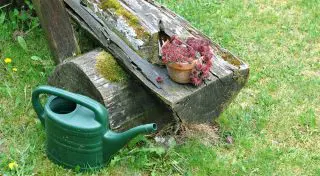Nutrient deficiency in plants and how I recognize it?
For optimal and healthy growth, our plants need so-called nutrients.
These nutrients are chemical elements and indispensable for plants, a deficiency usually does not show up immediately, but is often only detectable after a few weeks. It is therefore very important to react very quickly at the first signs in order not to permanently damage our beloved plants, or even lose them.
However, it is quite difficult to recognize a nutrient deficiency in plants, especially it is difficult to tell the difference between deficiency, overfertilization or a burn from too much sun.
It is important, before we look at the causes and the right countermeasures for nutrient deficiencies, we should look at the PH value of the soil. Especially the often neglected PH value of the soil can be the cause of the deficiency symptoms.
This is because if the PH value of the soil is too low or significantly higher than 7, the plant can no longer absorb the nutrients in sufficient quantities or even at all.
Garden plants, for example, need a PH value of 5.5 to a maximum of 7.5. The ideal PH value varies, of course, from plant to plant, a small overview can be found here.
As you can see a lack of nutrients is often due to the PH value in the soil, to determine the current PH value of the soil helps a so-called soil tester*.
I have now compiled a small overview of the various deficiencies, their damage and a possible countermeasure and hope that it helps you a little further…
Nitrogen deficiency
Damage pattern:
Nitrogen deficiency often leads to yellowish to light green discolored leaves as a result of impaired photosynthesis.
Cause:
Wet and cold usually also additionally poorly aerated soil. Humus content is very low.
Countermeasure:
The quickest countermeasure is to remedy the nutrient deficiency with a foliar fertilizer. But it also works quite well with nitrogen-containing liquid fertilizer. But also with horn shavings, horn grit or horn meal the nitrogen content in the soil can be improved.
Lack of phosphorus
Damage pattern:
Phosphorus deficiency can be recognized quite quickly by yellowing leaves and weak flower and fruit formation. However, the discoloration can also go into blue-green to purple.
Cause:
Mostly the cause is a lack of absorption capacity of the
plant by binding phosphorus in alkaline or acidic soil.
Countermeasure:
Phosphorus fertilization to maintain soil phosphorus Bring the soil PH to 6.0-6.5.
Potassium deficiency
Damage pattern:
In our plants, the lack of potassium is manifested by the bleaching of the leaves of the so-called chlorosis. Later, the leaves dry out from the edges and die. In case of potassium deficiency, the plant shows a very low stability and the leaves hang down limply.
Cause:
Often occurs during drought in heavy clay soils. The soil’s potassium stores are also empty after a long and debilitating winter.
Countermeasure:
The addition of potash magnesia or wood ash is very effective, but the addition of combination fertilizer with a potassium content is also very helpful here.
Calcium deficiency
Damage pattern:
Sparse growth (leaves and roots remain small). Plant stems bend in the upper area. Young leaves turn yellow (chlorosis).
Cause:
Often seen in acidic soils(pH below 5) that are also subject to heavy leaching.
Countermeasure:
Addition of fertilizer containing lime (e.g. Thomas potash , Thomas lime, hyperphosphate, etc.).
Magnesium deficiency
Damage pattern:
Areas between leaf veins turn yellow, later brown and die. Fruits usually remain small.
Cause:
Acidic (pH below 5) and waterlogged, usually sandy soil are usually the cause.
Countermeasure:
Regular use of fertilizer containing magnesium ( patent potash, grain potash with Mg, Mg-ammon saltpeter, etc.).
Manganese deficiency
Damage pattern:
Usually the leaf gets the typical yellow coloration (chlorosis), but the leaf veins remain green.
Cause:
Alkaline and humus-rich soils or a long wet period.
Countermeasure:
Foliar fertilization with a fertilizer containing manganese often helps here. For potted plants it makes sense to replace the plant soil.
Iron deficiency
Damage pattern:
Chlorosis (bleaching) of the younger leaves which, in the case of severe iron deficiency, goes as far as white and leads to the death of the leaves.
Cause:
Often also a problem with alkaline soils.
Countermeasure:
Foliar fertilization with iron-containing fertilizer such as Ferramin , Fetrilon or Optifer. For potted plants it is easier to replace the soil.
Boron deficiency
Damage pattern:
Poor development of leaf and flower buds. Chlorosis (bleaching) of younger leaves or possibly deformed leaves.
Cause:
Very acidic soils ( PH value less than 5 ) or alkaline soils (PH value over 7.5 ) Drought increases boron deficiency.
Countermeasure:
Foliar fertilization with fertilizer containing boron and soil correction into the PH neutral range.
Zinc deficiency
Damage pattern:
Small yellow spotted leaves. Symptoms usually appear in strong sunlight.
Cause:
Zinc deficiency usually occurs in alkaline or very acidic soils, where the nutrient zinc cannot be absorbed in sufficient quantities.
Countermeasure:
Foliar fertilization with zinc content.
Deficiency of molybdenum
Damage pattern:
Yellow to brown tissue spots on the leaves that usually ends with the death of the leaves.
Cause:
In highly acidic soils, there is often not enough molybdenum available for the plant.
Countermeasure:
Mostly a trace element fertilizer helps here or with potted plants an exchange of the plant soil.
I hope that I could help you a little bit with this overview. If you still have questions about this topic, please do not be shy and just ask…


